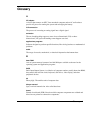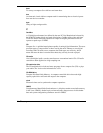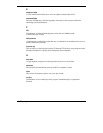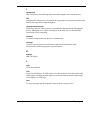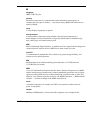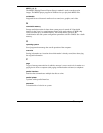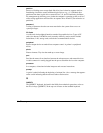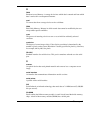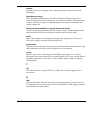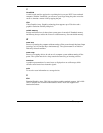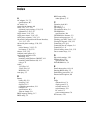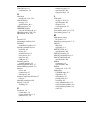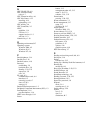
8 Glossary
partition
Process of dividing mass storage (hard disk drive) into isolated or separate sections.
Partitioning a hard drive creates additional logical drives, e.g., a 5.1-GB hard drive
partitioned into three logical drives creates drives C, D, and E. Partitioning facilitates
file management by allowing you to isolate the computer’s operating system to drive C
while storing applications and data files on separate drives D and E (also referred to as
partitions).
password
A string of characters that the user must enter before the system allows access or
system privileges.
PC Cards
A credit card sized peripheral interface standard for portable devices. Types of PC
cards (also known as PCMCIA cards) currently offered by major vendors include
fax/modems, LAN, storage cards, and wireless communications devices.
peripheral
Input or output device not under direct computer control. A printer is a peripheral
device.
pixels
Picture elements. Tiny dots that make up a screen image.
port
Provides the means for an interface between the microprocessor and external devices.
A cable connector is usually plugged into the port to attach the device to the computer.
processor
In a computer, a functional unit that interprets and executes instructions.
prompt
A special symbol indicating the beginning of an input line. Also a message that appears
on the screen indicating that the user must take a certain action.
Q
QWERTY
The QWERTY keyboard, designed in the 1800s for mechanical typewriters, refers to
the first six keys (QWERTY) on the top row of letters on the standard keyboard.




